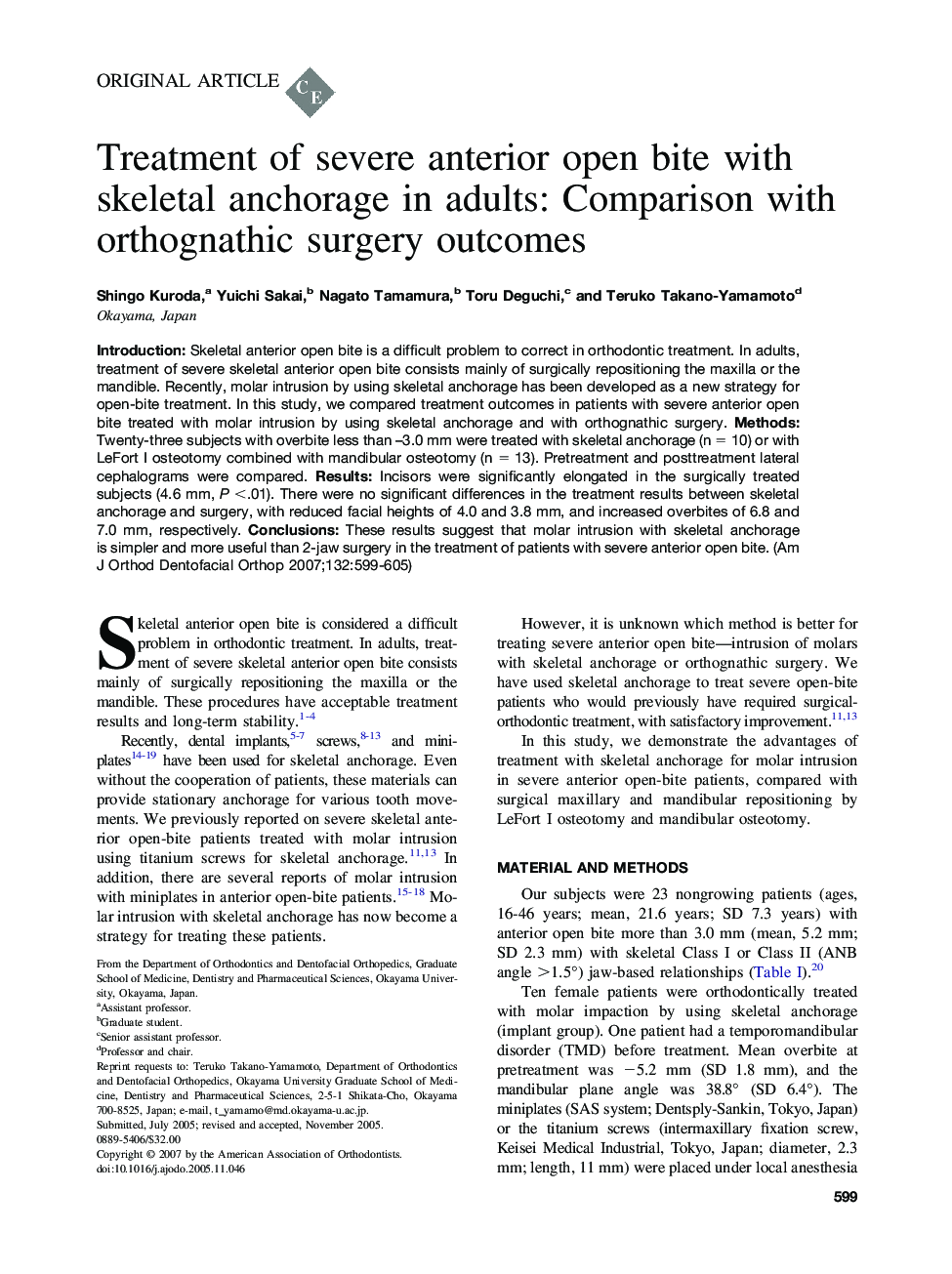| Article ID | Journal | Published Year | Pages | File Type |
|---|---|---|---|---|
| 3119666 | American Journal of Orthodontics and Dentofacial Orthopedics | 2007 | 7 Pages |
Introduction: Skeletal anterior open bite is a difficult problem to correct in orthodontic treatment. In adults, treatment of severe skeletal anterior open bite consists mainly of surgically repositioning the maxilla or the mandible. Recently, molar intrusion by using skeletal anchorage has been developed as a new strategy for open-bite treatment. In this study, we compared treatment outcomes in patients with severe anterior open bite treated with molar intrusion by using skeletal anchorage and with orthognathic surgery. Methods: Twenty-three subjects with overbite less than –3.0 mm were treated with skeletal anchorage (n = 10) or with LeFort I osteotomy combined with mandibular osteotomy (n = 13). Pretreatment and posttreatment lateral cephalograms were compared. Results: Incisors were significantly elongated in the surgically treated subjects (4.6 mm, P <.01). There were no significant differences in the treatment results between skeletal anchorage and surgery, with reduced facial heights of 4.0 and 3.8 mm, and increased overbites of 6.8 and 7.0 mm, respectively. Conclusions: These results suggest that molar intrusion with skeletal anchorage is simpler and more useful than 2-jaw surgery in the treatment of patients with severe anterior open bite.
